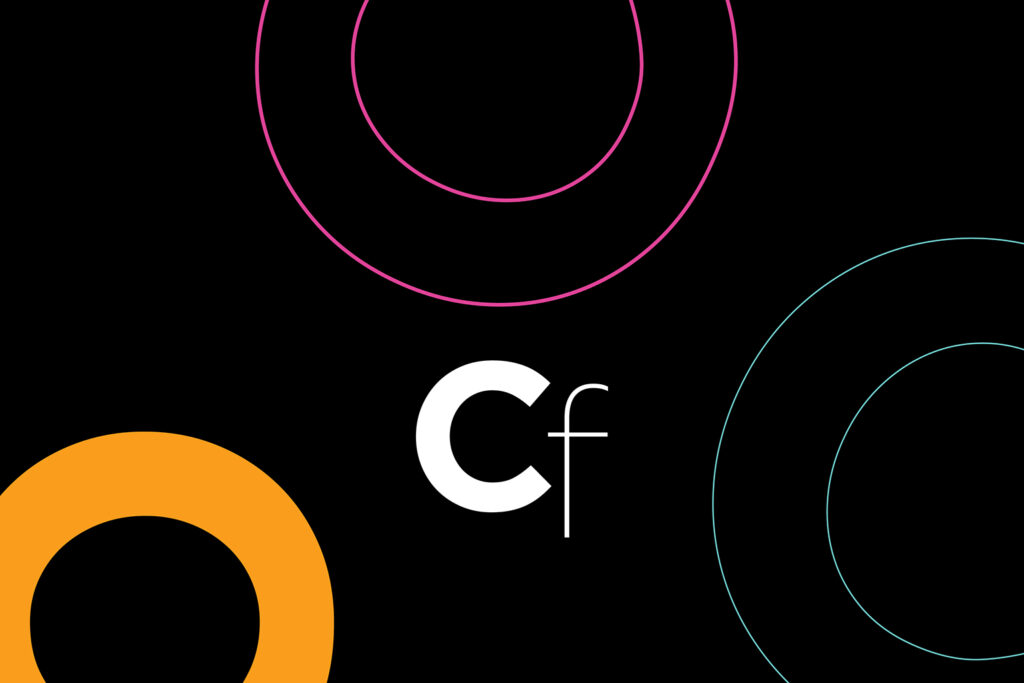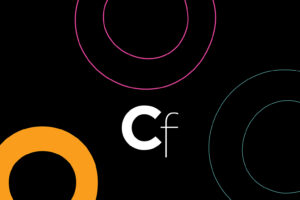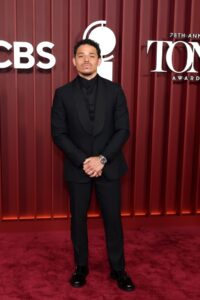Kim Yun Shin Has Been Sculpting in Solitude for Decades. The World Has Finally Noticed.

Kim Yun Shin’s carefully carved wood and stone sculptures don’t look like they were made by someone using a chainsaw. It’s an unusual tool for a 90-year-old artist, but it helps that that Kim started using it in 1984 and that she has the energy of someone much younger. The Korean artist spends hours making her art: monochrome lithographs composed of intersecting shapes; paintings made of hundreds of lines; sculptures that take the form of hand-carved pieces of wood and stone.
“When inspiration strikes, I immerse myself completely, picking up the chainsaw and finishing the piece in a single day,” she wrote to ARTnews. “I work instinctively, without pre-planning, following my intuitive guidance. Even when using sandpaper, I avoid getting the help from assistants, as the cut surface of the wood changes with each touch, and I want my hands to be the only ones involved until the end.”
This energy is something Kim has developed over seven decades—and it has been especially helpful to her over the last two years. After a retrospective at the Nam-Seoul Museum of Art (SeMA) in 2023 drew the attention of curators and gallerists, Kim gained representation with Lehmann Maupin and Kukje Gallery. Exhibitions in Seoul, London, and New York have followed, as has an appearance in the 2024 Venice Biennale.

Courtesy the artist, Lehmann Maupin, New York, Seoul, and London; and Kukje Gallery, Seoul and Busan. Photo by Studio Kukla.
Gallerists and curators described Kim as a pioneering female artist whose body of work is informed by living, learning, and working in multiple cities.
“Her work is a lot about connecting man, nature and the cosmos, thinking about that kind of structure,” Kyung An, the Guggenheim Museum’s Asian art initiative curator and head of its global exhibitions initiative, told ARTnews. “I was really struck by this bold approach to sculpture that we hadn’t seen before.”
Lehmann Maupin cofounder Rachel Lehmann told ARTnews, “It can’t get more real than somebody working for 70 years and nobody giving you attention, right? You can’t fake it.”
That creative journey started with Kim being born in Wonsan, in present-day North Korea. Shortly after the outbreak of the Korean War in 1950, Kim and her mother were able to flee to South Korea.
Soon after getting her BFA in sculpture from Hongik University in Seoul in 1959, Kim decided to move to Paris to study sculpture and lithography at the École Nationale Supérieure des Beaux-Arts in 1964.
During this period, Kim created lithographs on traditional Korean paper using ink, delicate lines, geometric shapes, and the spiral shape of the taegeuk, the Korean symbol for the dual forces of nature that is visually similar to the Chinese yin and yang.

After five years in the French capital, she moved back to Seoul and taught sculpture at Seoul’s Sangmyung University until 1983. During this time, she also started the Korean Sculptress Society, which is still active today. The next year, Kim decided to move to Buenos Aires after an initial visit to see a nephew. She lived and worked there until 2022, the year she moved to Paju, a city located about an hour outside Seoul. Between the late 1980s and early 2000s, Kim also spent time in Mexico and Brazil. In 2008, she founded a namesake museum in Buenos Aires, the first one in the world to be focused on Korean immigrant art. She now splits her time between two studios in Buenos Aires and Seoul.
Her transcontinental career shaped her work, freeing her from artistic trends in Korea. “Most artists of her generation in Korea had to be at one stage or another contemplating and wrestling with the notion of ‘Western’ modernism,” Eunah Park, director of Kukje Gallery in Seoul, said in an email to ARTnews. “But because Kim physically uprooted herself and planted herself in a completely new land, she was completely free to absorb what she wished. Her independence is what defines her.”
Kim described her artistic career as “a continuous journey of exploration, expansion, and development across various media, including sculpture, printmaking, and painting.”
“Ultimately,” she said, “the diverse landscapes, inspirations, and cultures I encountered in different countries became a vital energy that shaped my artistic journey.”

Starting in the mid-1980s, Kim drew her inspiration from the natural materials she encountered in Argentina and Mexico City, where she saw an exhibit at the Palacio de Bellas Artes featuring works created in onyx in 1988. “They guided me toward an exploration of the principles and order inherent in nature, which I pursued in my ‘Add Two Add One Divide Two Divide One’ series,” she told ARTnews. The series attests to Kim’s interests in philosophy and architecture, specifically the “Gyeolgu-beop” technique seen in the carefully carved slots of traditional Korean homes. The wooden sculptures also resemble mountain ranges, whale tails, sprouting plants, canyon ridges, and more.
While the decades in Argentina were inspiring for Kim, the first 15 years were also a struggle. There were few other Koreans there, and the artist did not know how to speak Spanish. Plus, maneuvering local materials was no easy task.
“For the first 15 years, it was a battle between myself and the massive, heavy wood,” Kim said. “Alone in my workshop, I used levers and pulleys to move and carve the materials, immersing myself entirely in my work. Though it was a difficult time, I consider it a meeting with God, a time of prayer. Even now, I see my artistic work as a moment where the primal forces of nature, the divine, and my own soul become one.”
At the same time, she was also producing colorful paintings that make use of a stamping technique associated with printmaking. Her abstractions frequently feature intersecting planes composed of gridded lines and stripes, and they look a bit like the organic forms the artist had already explored in wood, steel, and stone. She has continued painting—and sometimes even paints her sculptures, which she said reflects “the reciprocal influence of painting on my sculptural work.”

Lehmann saw Kim’s survey exhibition at SeMA in 2023, and then visited the artist’s Paju studio. “We completely fell in love with her. She was so vivid and so committed, and working at such an old age,” she told ARTnews. The artist “had such a young spirit.”
Park was also “blown away” by Kim’s solo retrospective at SeMA, which had the highest average daily visitor count among all exhibitions held at the museum. “The ‘explosiveness’ in her vibrant vocabulary and the grammar of sculpture was something different from what I had seen in the works of her generation,” Park told ARTnews.
Despite all this praise, Kim remains modest to a fault. She even described nearly missing out on the opportunity to appear in curator Adriano Pedrosa’s Venice Biennale last year.
She first received the news she would be included while participating in an artist residency program in Yanggu, a small town near the Demilitarized Zone. Pedrosa called her in the early hours. “I was so disoriented that I couldn’t fully grasp what was happening,” Kim said. “It turned out that he had attempted to contact the studio several times via email a few months earlier, but I had missed them. I was in disbelief and couldn’t think clearly for a while. Eventually, I offered a prayer of gratitude.”

Following the Biennale, Kim’s career has only gained momentum. Lehmann Maupin has placed works with the Singapore Art Museum, the Guggenheim Museum in New York, and Harvard University’s Fogg Museum.
An, the Guggenheim curator, described personally paying Kim a visit with Guggenheim director Mariët Westermann last year. “I remember in the studio visit she talked about certain woods have certain smells, they look different in colder temperatures or, as opposed to warmer climates,” An said. “That living kind of quality, the life-like quality of these materials that she works with, was very inspiring.”
“I was really struck by this kind of bold approach to sculpture that we hadn’t seen before.”

Kim also plans to keep creating more work. After she relocated back to South Korea in 2022, she learned a new technique of bronze casting. “I was drawn to bronze’s durability and suitability for outdoor display, and I now want to continue working with this technique in the future,” she said.
Kim still has never had a retrospective in the West, though her dealers hope to change that. “It is our sincere hope to be able to celebrate such retrospective with the artist by our side, smiling her signature smile in her sunglasses,” Park, the Kukje director, said.
Even with this “whirlwind” of attention, Kim prefers that her work speak for her. “I hope that each piece I create can transcend words, conveying the energy, emotion, and spirituality I pour into every stroke, shape, and detail,” she said. “I believe the true essence of my art lies not in its description, but in the experience it evokes.”






